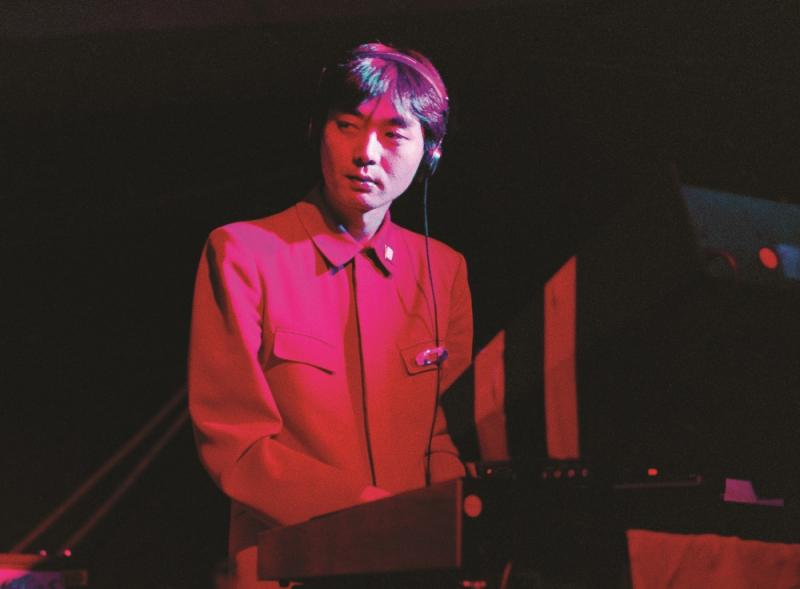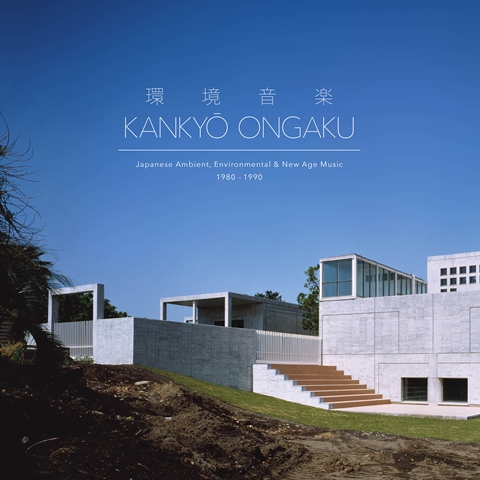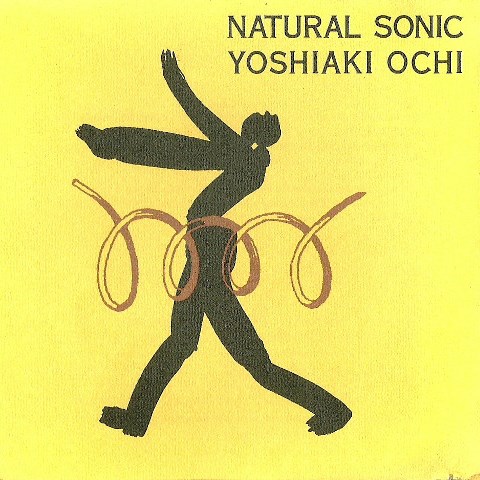Reissue CDs Weekly: Kankyō Ongaku | reviews, news & interviews
Reissue CDs Weekly: Kankyō Ongaku
Reissue CDs Weekly: Kankyō Ongaku
Delightful and illuminating dive into Japanese ambient, environmental and new age music

Of the 20-plus names gathered on the superbly packaged Kankyō Ongaku, it’s likely that only Yellow Magic Orchestra and their members Haruomi Hosono and Ryuichi Sakamoto are familiar to most non-Japanese listeners.
Kankyō Ongaku: Japanese Ambient, Environmental & New Age Music 1980–1990 collects exactly what it says. “Kankyō ongaku” translates as environmental music. Nothing here is unapproachable. According to the accompanying book's introductory essay, kankyō ongaku was first used in the Sixties and then encompassed sounds like chimes incorporated into architectural features.
 As a distinct musical category, kankyō ongaku gained traction after Eno’s Music For Airports album reached Japan in 1977. Around the same time, a 1975 exhibition featuring the music of Erik Satie began fomenting what the essay calls a “Satie craze.” Musicians picked up on the both angles, especially Yellow Magic Orchestra’s veteran sonic maverick Haruomi Hosono. Kankyō Ongaku amply demonstrates that Hosono was not alone. He was also not operating in a geographic vacuum as acknowledged in 1983 when the Davids Bowie and Sylvian collaborated – separately – with Ryuichi Sakamoto, another Yellow Magic Orchestra member.
As a distinct musical category, kankyō ongaku gained traction after Eno’s Music For Airports album reached Japan in 1977. Around the same time, a 1975 exhibition featuring the music of Erik Satie began fomenting what the essay calls a “Satie craze.” Musicians picked up on the both angles, especially Yellow Magic Orchestra’s veteran sonic maverick Haruomi Hosono. Kankyō Ongaku amply demonstrates that Hosono was not alone. He was also not operating in a geographic vacuum as acknowledged in 1983 when the Davids Bowie and Sylvian collaborated – separately – with Ryuichi Sakamoto, another Yellow Magic Orchestra member.
Kankyō Ongaku is sequenced for listening flow rather than in chronological order of each track’s original appearance, so determining whether a musical evolution took place within the loosely defined remit isn’t immediately possible. However, the date range covered spans the period when digital instruments and recording supplemented and supplanted analogue equipment. Cutting-edge gear produced by Japanese companies like Roland and Yamaha was more quickly available to local musicians than those in other countries and the use of tresh tools inevitably changes the music. However, the potential effects of these factors are not addressed in the track-by-track commentary.
Date-wise, just under half the tracks – 25 on triple vinyl, 23 on double CD – are from 1983 to 1986. The 1990 end of the chosen time-line is represented just once, as is 1989. For anyone not conversant with this field, it is impossible to determine whether such a weighting reflects a surge in recordings of this type during the early to mid-Eighties or if it is a result of the compiler’s taste.
 Imponderables aside, Kankyō Ongaku is a delightful and illuminating collection. Every track is great. Until now, barely any of this has been released outside Japan and an overview was lacking. Joe Hisaishi’s “Islander” (1982) sets off a Terry Riley synth pulse against keyboard wash and spare arpeggios. Pattering percussion suggests a Japanese origin. Percussion figures strongly overall. Indeed, Yoshiaki Ochi, whose compelling “Ear Dreamin’” (recorded in 1990 for the Natural Sonic album, although it was first performed in 1983) appears, is a percussionist whose work includes sound design for spaces within corporate buildings.
Imponderables aside, Kankyō Ongaku is a delightful and illuminating collection. Every track is great. Until now, barely any of this has been released outside Japan and an overview was lacking. Joe Hisaishi’s “Islander” (1982) sets off a Terry Riley synth pulse against keyboard wash and spare arpeggios. Pattering percussion suggests a Japanese origin. Percussion figures strongly overall. Indeed, Yoshiaki Ochi, whose compelling “Ear Dreamin’” (recorded in 1990 for the Natural Sonic album, although it was first performed in 1983) appears, is a percussionist whose work includes sound design for spaces within corporate buildings.
It is striking how much of this music seamlessly merges environmental sounds (birds, dripping, water lapping) with traditional percussion (including fingers clicking) and electronic instruments. It is a terrifically seductive slant on new age music.
Haruomi Hosono’s “Original BGM” (1984) is yet another treasure. It was recorded to be heard in Muji stores. “BGM” is a contraction of “background music.” Yoshio Ojima, who began making similarly minded music in the Eighties and is also included, is quoted in the booklet remarking that when he heard “Original BGM” in one of the shops he realised that the “kankyō ongaku boom had finally arrived.”
For those not lucky enough to have been there back then, the essential Kankyō Ongaku: Japanese Ambient, Environmental & New Age Music 1980–1990 will be where their own kankyō ongaku boom begins.
- Next week: Celebration of, as the title puts it, Manchester – A City United in Music
- Read more reissue reviews on theartsdesk
- Kieron Tyler’s website
Explore topics
Share this article
The future of Arts Journalism
You can stop theartsdesk.com closing!
We urgently need financing to survive. Our fundraising drive has thus far raised £49,000 but we need to reach £100,000 or we will be forced to close. Please contribute here: https://gofund.me/c3f6033d
And if you can forward this information to anyone who might assist, we’d be grateful.

Subscribe to theartsdesk.com
Thank you for continuing to read our work on theartsdesk.com. For unlimited access to every article in its entirety, including our archive of more than 15,000 pieces, we're asking for £5 per month or £40 per year. We feel it's a very good deal, and hope you do too.
To take a subscription now simply click here.
And if you're looking for that extra gift for a friend or family member, why not treat them to a theartsdesk.com gift subscription?
more New music
 Benson Boone, O2 London review - sequins, spectacle and cheeky charm
Two hours of backwards-somersaults and British accents in a confetti-drenched spectacle
Benson Boone, O2 London review - sequins, spectacle and cheeky charm
Two hours of backwards-somersaults and British accents in a confetti-drenched spectacle
 Midlake's 'A Bridge to Far' is a tour-de-force folk-leaning psychedelic album
The Denton, Texas sextet fashions a career milestone
Midlake's 'A Bridge to Far' is a tour-de-force folk-leaning psychedelic album
The Denton, Texas sextet fashions a career milestone
 'Vicious Delicious' is a tasty, burlesque-rockin' debut from pop hellion Luvcat
Contagious yarns of lust and nightlife adventure from new pop minx
'Vicious Delicious' is a tasty, burlesque-rockin' debut from pop hellion Luvcat
Contagious yarns of lust and nightlife adventure from new pop minx
 Music Reissues Weekly: Hawkwind - Hall of the Mountain Grill
Exhaustive box set dedicated to the album which moved forward from the ‘Space Ritual’ era
Music Reissues Weekly: Hawkwind - Hall of the Mountain Grill
Exhaustive box set dedicated to the album which moved forward from the ‘Space Ritual’ era
 'Everybody Scream': Florence + The Machine's brooding sixth album
Hauntingly beautiful, this is a sombre slow burn, shifting steadily through gradients
'Everybody Scream': Florence + The Machine's brooding sixth album
Hauntingly beautiful, this is a sombre slow burn, shifting steadily through gradients
 Cat Burns finds 'How to Be Human' but maybe not her own sound
A charming and distinctive voice stifled by generic production
Cat Burns finds 'How to Be Human' but maybe not her own sound
A charming and distinctive voice stifled by generic production
 Todd Rundgren, London Palladium review - bold, soul-inclined makeover charms and enthrals
The wizard confirms why he is a true star
Todd Rundgren, London Palladium review - bold, soul-inclined makeover charms and enthrals
The wizard confirms why he is a true star
 It’s back to the beginning for the latest Dylan Bootleg
Eight CDs encompass Dylan’s earliest recordings up to his first major-league concert
It’s back to the beginning for the latest Dylan Bootleg
Eight CDs encompass Dylan’s earliest recordings up to his first major-league concert
 Ireland's Hilary Woods casts a hypnotic spell with 'Night CRIÚ'
The former bassist of the grunge-leaning trio JJ72 embraces the spectral
Ireland's Hilary Woods casts a hypnotic spell with 'Night CRIÚ'
The former bassist of the grunge-leaning trio JJ72 embraces the spectral
 Lily Allen's 'West End Girl' offers a bloody, broken view into the wreckage of her marriage
Singer's return after seven years away from music is autofiction in the brutally raw
Lily Allen's 'West End Girl' offers a bloody, broken view into the wreckage of her marriage
Singer's return after seven years away from music is autofiction in the brutally raw
 Music Reissues Weekly: Joe Meek - A Curious Mind
How the maverick Sixties producer’s preoccupations influenced his creations
Music Reissues Weekly: Joe Meek - A Curious Mind
How the maverick Sixties producer’s preoccupations influenced his creations

Add comment